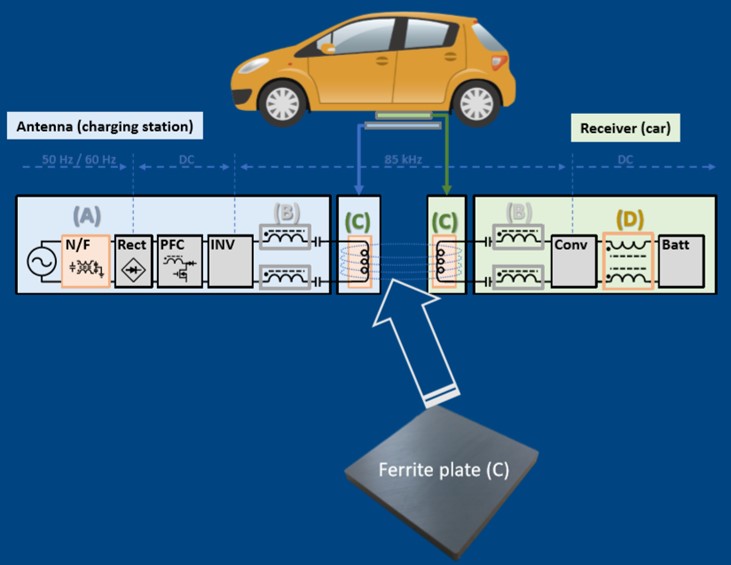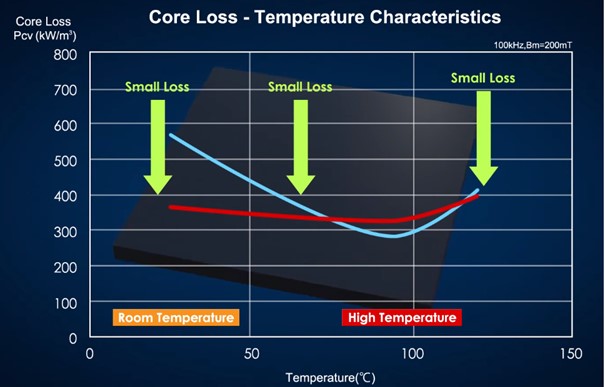Today, electric vehicles are becoming increasingly popular. Electric motors are gradually replacing traditional internal combustion engines, and in the future we will see more and more electric vehicles on the streets.
The reasons for such a development of electric drives include legislative changes in many countries around the world, which set increasingly restrictive limits on greenhouse gas emissions of internal combustion engine vehicles. Additionally, there is a growing awareness of the need to care for the environment and combat climate change.
KEMET ferrite plates in TME's offer
The main disadvantage of electric vehicles is their short range, while the development of this industry is hindered by technological limitations. Traditionally, electric cars are charged using a cable that needs to be plugged into a suitable socket in the vehicle. Long charging times can be discouraging, especially during bad weather. The answer to these challenges is the wireless charging system, which develops more and more dynamically around the world.
The wireless charging system uses the electromagnetic induction. An alternating current is passed through the transmitter coil. This produces an alternating magnetic field around the coil. After placing the second (receiver) coil within a short distance, you can observe the electromagnetic induction in the receiver coil, and when the circuit is closed, a current will flow through it and it will be possible to charge the battery. An air gap transformer works on a similar principle.

Easy charging of electric cars
Inductive charging of electric vehicles, from the driver's point of view, involves driving the car to the charging station. This keeps the coils as close as possible. The battery will start charging without the need for a bulky cable as with the traditional method. To illustrate the principle of this system even better, you can use a comparison with wireless smartphone charging, which has become more and more popular in recent years. When charging the phone, we place the device on the induction plate. The process is exactly the same with vehicle charging, the only difference being that the scale is larger.
Better charging efficiency of electric vehicles
Designers of wireless charging systems pay the most attention to charging efficiency. Therefore, newer and newer plates, made of sintered metal oxides to help achieve the highest possible efficiency, are being developed to increase the efficiency of wireless charging. In traditional solutions, the charging device is based on a metal housing, which unfortunately absorbs the magnetic field and significantly reduces the efficiency of the entire system. The solution is ferrite plates made by KEMET. The plate is placed between the coil of the charging device and the metal housing, thus greatly increasing the efficiency of energy transmission.
Analysing the dependence of energy losses on ambient temperature, it can be stated that conventional materials (blue curve) have lowest losses at temperatures around 100°C. In contrast, the highest losses occur around room temperature. What distinguishes KEMET ferrite plates is the fact that the energy loss characteristics (red curve) are much more favourable. The energy transmission efficiency is similar both at near room temperature and at 100°C. This property allows the plates to be used effectively in both cold climates, such as Alaska or Scandinavia, and warm climates, such as Hawaii.

Proper selection of ferrite plates
KEMET ferrite plates have standardised dimensions of 100x100 mm. However, we can choose the plate thickness. The range includes 4, 6, 8, 10, and 12mm thick plates. The thickness of the plate affects the weight of the device - the thicker the plate, the greater its weight. The plates operate at power levels of 3.7 kW, 7.7 kW, or even 11 kW. In addition, KEMET offers plates with non-standard dimensions, according to the customer's needs.
When choosing the right plate, designers should pay special attention to selecting the right thickness of the ferrite plate. Choosing a plate that is too thin will compromise the properties and performance of the wireless charging system.
Ferrite plates will find application in the automotive and industry sectors and in wireless charging systems.
If you are interested in wireless vehicle charging systems using KEMET ferrite plates, please contact our advisors who will help you choose the right product.